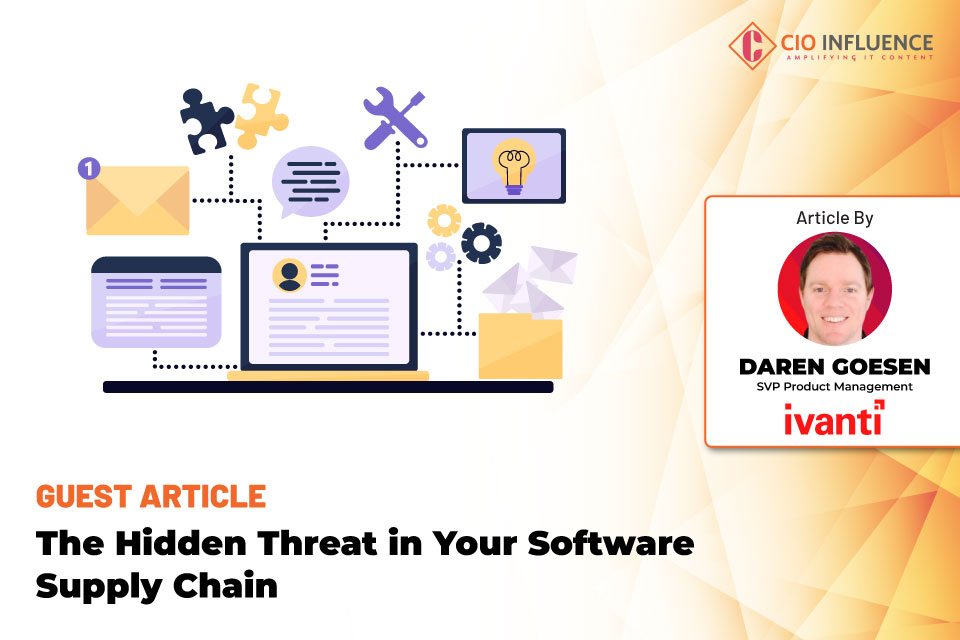Not that you were ignoring cybersecurity before, but lately it has been impossible to ignore, with the world waking up to what’s really at stake when things go wrong.
With the increased focus, you’re probably crossing every “t” and dotting every “i” in your organization’s cybersecurity posture.
But there’s a problem: Unless you operate in a vacuum, it’s not just your organization’s cybersecurity posture that you need to worry about.
Also Read: A Comprehensive Guide to DDoS Protection Strategies for Modern Enterprises
Your vendors’ vulnerabilities are your vulnerabilities
Your supply chain is only as strong as its weakest link. You likely have contingency plans for shipping delays, service issues, or manufacturing errors.
But what about the cybersecurity posture of those vendors? An attack on one of them has a ripple effect, and you’ll get caught up in it. This isn’t a theoretical warning; a 2023 study by Capterra found that 61% of companies had been impacted by software supply chain attacks in the preceding 12 months. Meanwhile, in a recent survey by Ivanti just 46% of security professionals said they have identified the third-party systems that are most vulnerable in their software supply chain. This disconnect between the threat landscape and the level of preparedness is alarming, to say the least.
Attack surfaces are incredibly dynamic, expanding and shifting rapidly as threats evolve and endpoints become increasingly decentralized in today’s complex IT ecosystem. It will quickly become unchecked if you take your eye off the ball.
That’s intimidating enough, but you must also consider that your “attack surface” includes your whole software supply chain.
Who is responsible for software supply chain security?
In an ideal world, the vendors within your supply chain would be responsible for ensuring their own security posture, and they’d be fantastic at it. The buck stops with them. But should you count on that? At the end of the day, you’re the one in the line of fire. Even if individual vendor accountability is the “fair” approach, that doesn’t mean it’s the right approach. You can have vendors with the best intentions who are the best in the business, but that still doesn’t mean they match your standards for cybersecurity.
In addition to conducting supply chain audits, CISOs have the opportunity to collaborate with CIOs in making strategic choices regarding vendor selection. This partnership can significantly decrease the risk level of the organization by ensuring that vendors uphold secure-by-design principles. Some ways to achieve this include implementing a vulnerability disclosure policy, promoting secure authentication methods, and offering tools to detect and gather evidence of potential breaches.
Additionally, you can and should take full responsibility for:
- A comprehensive approach that manages your entire attack surface.
- Establishing and deploying policies that incorporate vendors into your supply chain security approach.
The foundation of a strong ASM strategy
To mitigate attacks, Attack Surface Management (ASM) can monitor internet-facing assets. This can help organizations better understand their holistic risk profile – including risks introduced by your supply chain, along with vet new suppliers, vendors, partners and even acquisition targets.
A robust, mature ASM strategy brings adaptive, focused, and continuous protection to your digital footprint.
Here are a few key elements:
- Comprehensive Visibility: A 360-degree view with continuous asset discovery that identifies your entire attack surface, including those hidden assets that often evade detection.
- Advanced Vulnerability Detection: A proactive approach that leverages advanced techniques, predictive analytics and machine learning to identify potential vulnerabilities before they’re exploited.
- Risk Assessment and Prioritization: A viewpoint of your risk levels across the organization so you can prioritize remediation — or, better yet, let an automated risk assessment solution prioritize it for you.
- Automation and Integration: Automation to streamline processes like scanning, analysis and patching — one that integrates seamlessly with your existing security infrastructure to ensure a coordinated and unified security posture.
Also Read: Protecting APIs at the Edge
Extending ASM to your supply chain
A mature ASM strategy can help ward off threats coming your way via your vendors. Still, bolstering your own defenses isn’t enough. You need a dynamic approach that doesn’t just protect you against your vendors (that’s not a very nice partnership strategy anyway) but invites them into your ASM strategy.
Here are a few ways to effectively extend your ASM strategy across your supply chain environment:
- Establish Clear Vendor Security Requirements: These should align with your organizational policies and comply with industry regulations like GDPR and HIPAA.
- Conduct Thorough Risk Assessments: Regularly audit your vendor ecosystem to understand how well each supplier meets your security requirements. This isn’t a one-and-done process — it needs to be ongoing.
- Integrate Vendors into Your Incident Response Plan: A predefined process for managing incidents is crucial for vendors with access to your systems and data.
- Embed Security in Contracts: Incorporating security measures into your vendor agreements ensures accountability and mutual understanding of each party’s role in maintaining security.
Evolve, adapt, automate
I already clarified that risk assessments aren’t “one-and-done,” but that goes for your entire ASM strategy. It must be able to adapt and evolve as the landscape evolves. Strong core principles can persist in anchoring the strategy, but a static approach will be outdated by the time it’s implemented.
That may sound like an impossible task, but that’s where AI and automation come in. The threat landscape is evolving, but so are the technologies that can address it. Today’s hyperautomated, end-to-end platforms can alleviate the burden on IT while shoring up the security posture for your entire supply chain environment.
[To share your insights with us as part of editorial or sponsored content, please write to psen@itechseries.com]


